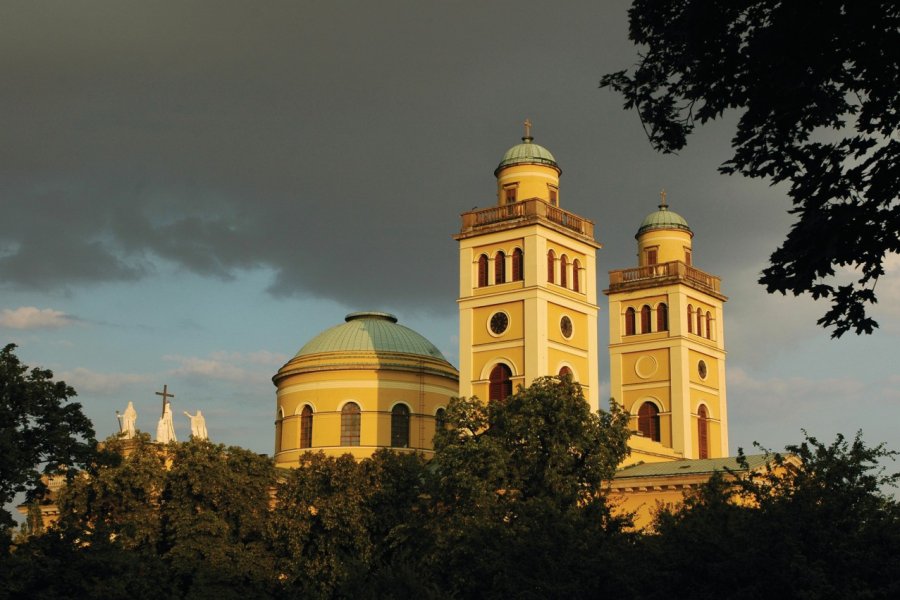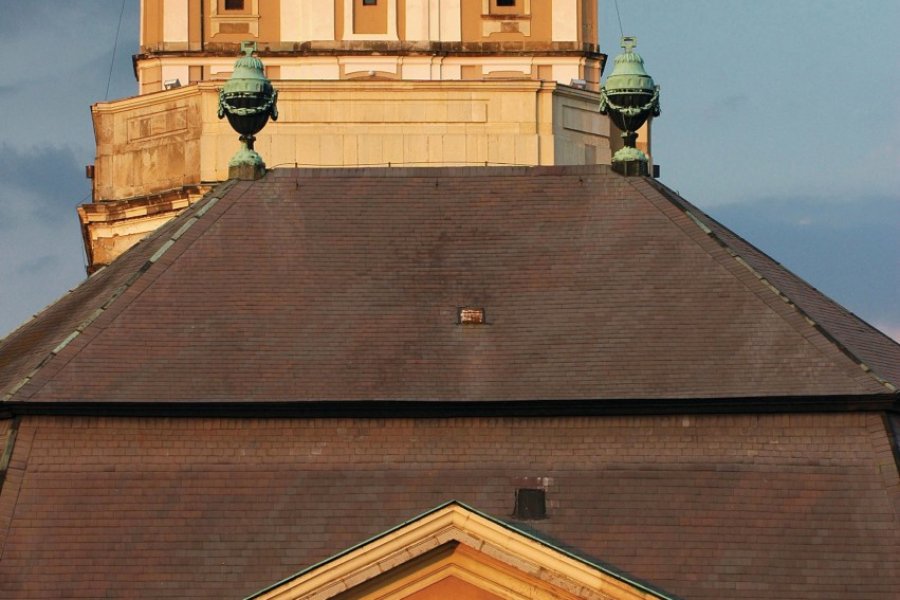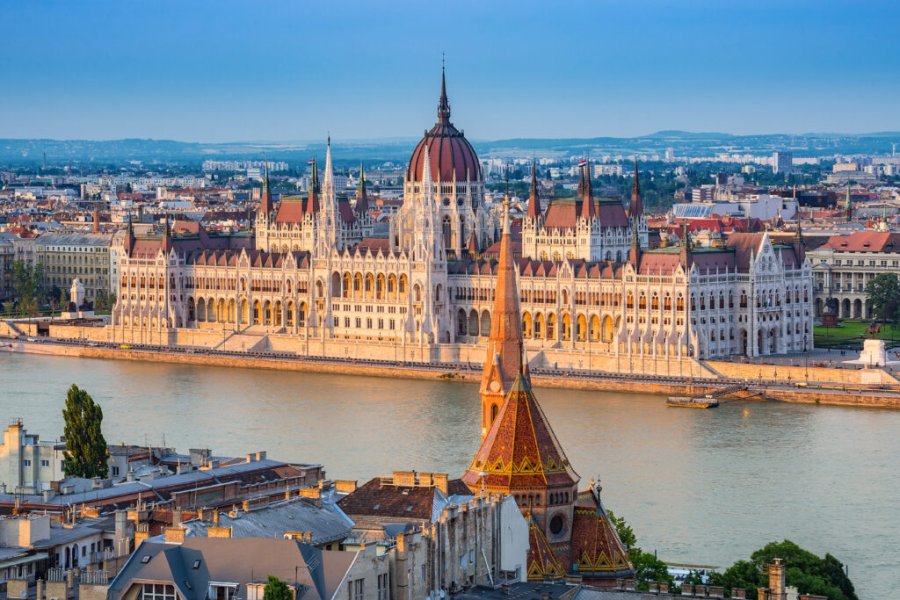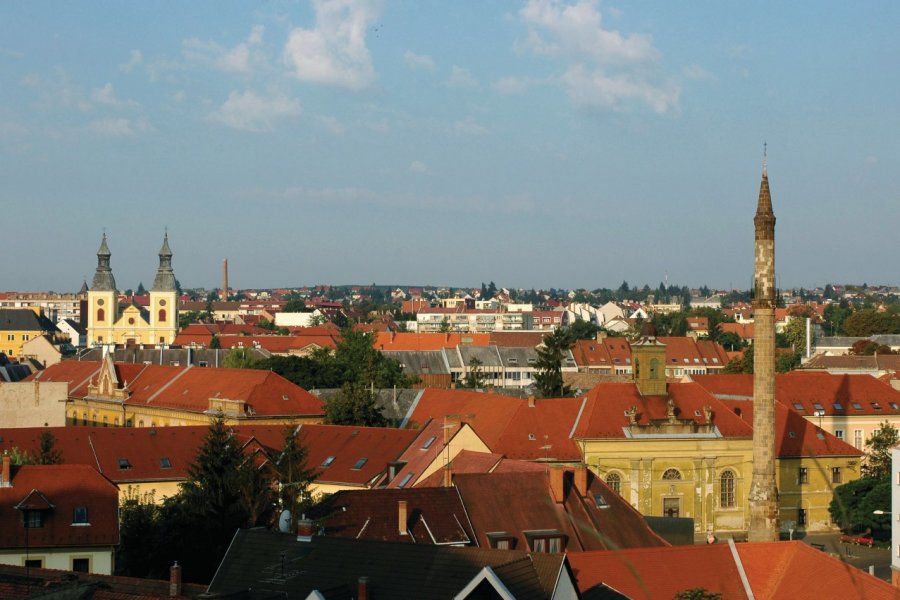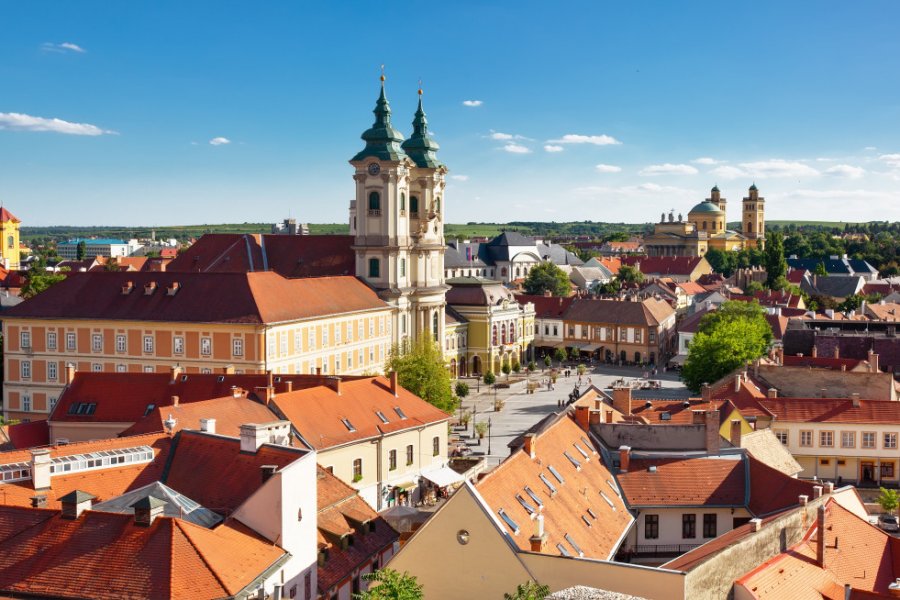Travel Guide Eger
Find an accommodation
Advertising
Eger (57 000 inhabitants) and its baroque palaces are only one hour's drive from Budapest (130 km) in the heart of a historic wine-growing region. A former ecclesiastical and administrative centre, Eger is a "baroque pearl", with monuments dating back to Gothic times, and beautiful buildings built in the th and th centuries, in the rococo, neoclassical and zopf style. Its narrow streets and squares invite cultural walks between its old stone showplace stones. The Baroque city is built around the old fortress, which looks after it by recalling, by its presence, the great victorious battle against the Turks in the th century. During their occupation, the Turks had already built thermal baths (renovated in the late 2000 s). It also dates back to the famous Kethuda minaret (the northernmost of Europe) and the bastion of the Turkish garden, inside the fortress.Bull blood and daughter of Eger. Eger, a seat of the archdiocese, and then of the archdiocese, has been a religious centre for more than a thousand years. Monastic orders played a major role in wine production in the region. The wines of Eger were already known in the Middle Ages. The most famous of these is the bikavér bikavér (Taureau blood of Eger), of a velvety red drawing almost black. The region also produces a lighter white wine called egri leányka (Fillette girl). These wines are grown in the numerous cellars of the small Szépasszonyvölgy valley (Beautiful Women Valley) located near the city centre. These medieval cellars, dug without penalty in the rock of volcanic tufa, form a whole network with a total length of 140 km. In addition to these wine cellars, which often offer a tasting of their production, in this charming valley you will enjoy welcoming rustic inns to green terraces.A fortress that resisted the Turks. Eger's main street is Széchenyi István utca that cuts the city in two from north to south. The main square, the old market place, is located below the castle. A magnificent Baroque church of 1771 dominates this square called Dobó, the name of the hero Dobó István (1500-1572), who fiercely fought the castle against the Turkish invader. His statue, a work of the famous sculptor Alajos Stróbl (1856-1926), orne the square. Eger consists of a large number of Baroque mansions and mansions, such as the Minor Provost Palace, and the one of the Major Prévot, the County Headquarters (currently housed in the Council), the Archiepiscopal High school (currently the Superior normal school Eszterházy), the former church of the minor brothers, the church Saint Bernard and the Serbian church. In summer, this beautiful Baroque city hosts many festivals. Churches, the fort castle and other baroque buildings serve as a forum for organ or chamber music concerts.
What to visit Eger?
Advertising
Weather at the moment
Advertising
Organize your trip with our partners Eger
Transportation
Book your plane tickets
Car Rental
Boat rental
Accommodation & stays
Find a hotel
Holiday rental
Find your campsite
Tailor-made trip
Immersion travel
Services / On site
Activities & visits
Find a doctor
Eger travel inspiration
Find unique Stay Offers with our Partners
Pictures and images Eger
Featured articles Eger
Other destinations nearby Eger
5 km away
25 km away

